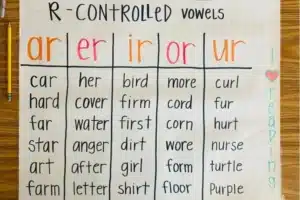
Source: fsedu
What is Dysgraphia Symptoms Checklist?
Identifying the signs of dysgraphia is significant for early intervention and care. A Dysgraphia Symptoms Checklist can be an important tool for parents, educators, and healthcare professionals to identify possible tasks in a kid’s writing skills. This list elucidates whether a kid might value further assessment or personalized learning plans by logically detecting and noting exact difficulties, such as uneven spacing, poor spelling, and rare wrist, body, or paper orientations while writing.
For example, a classic Dysgraphia Symptoms Checklist might cover stuff like “struggles to form thoughts on paper” or “has a tight, awkward pencil grip,” which highlight core areas of concern. Steady use of a Dysgraphia Symptoms List helps identify the concern and tracks the achievement of implemented plans over time.
What are Dysgraphia Identification Criteria?
A learning disability that disturbs the handwriting and fine motor skills of children, known as dysgraphia, needs careful identification considering several criteria. A common indicator is the readability of a person’s handwriting. Dysgraphia can manifest in various ways, impacting the ability to write logically and legibly.
Legibility of Writing
One of the primary criteria for detecting dysgraphia is the legibility of a free writing sample. If more than 25% of the writing sample is unreadable, it suggests the presence of dysgraphia. This means that more than one out of every four words cannot be easily read. For example, if a student writes a sentence like “The quick brown fox jmps ovr the lazy dg,” with multiple errors and unreadable words (interpreted here for clarity as ‘borwn,’ ‘foz,’ ‘jmps,’ ‘ovr,’ ‘dg’) make it tough to understand without context. In such cases, others often have to infer words from the surrounding context, an important indication of dysgraphia.
Dysgraphia Symptoms Checklist
As part of the identification process, a dysgraphia symptoms list is used by educational professionals to assess various factors. These include inconsistent spacing, unusual wrist, body, or paper orientations, and complaints of hand cramping. Each of these symptoms is checked carefully, helping diagnose dysgraphia.
Consistency of Writing Problems
Another principle is the consistency of the writing problems. Dysgraphia is not usually a temporary issue; it persists over time. Regular observations of a child’s writing across different tasks and over time are important to make an exact analysis.
By carefully assessing these standards and using the dysgraphia symptoms list, teachers and parents can better recognize the challenges handled by individuals with dysgraphia. Early identification leads to timely intervention, which is important in helping personalities overcome the tasks associated with dysgraphia.
To know about Learning Disability Course, Call / Whatsapp on +919321024137 / +919869866277.
To download Learning Disability Course brochure, Click Here!
How to Manage Dysgraphia in the Classroom?
Profound knowledge and exceptional transformative skills are required to manage dysgraphia in the classroom. By understanding dysgraphia symptoms and applying effective strategies, educators can wisely improve the learning environment for these students.
Here are some key methods to effectively manage dysgraphia in the classroom:
Provide the Child with Resources
Equip students with tools that can help them in writing tasks. This might include ergonomic pens or pencils designed for easier gripping, which can help reduce the physical stress of writing.
Make Notes and Lesson Plans Available in Class
Providing typed or digitally available notes helps students with dysgraphia keep up with the class without the added pressure of writing everything down. This can be particularly helpful for following along and revising material, which is important in managing dysgraphia in the classroom.
Use of Technology
Integrating technological use like computers or tablets in the classroom. Children with dysgraphia may find typing easier than writing. Speech-to-text software is a beneficial tool that helps students to coherent their thoughts without the pressure of handwriting.
Modified Paper
Modified paper like colored or lined paper, can be extremely helpful to enhance the visual lucidity of written work. Colored paper, for example, has been shown to help some kids focus better than standard white paper.
Provide Them with Graph Paper
Graph paper helps students with dysgraphia keep their writing aligned and neatly spaced. It can be particularly helpful in math classes, where alignment in equations is important.
Give Instruction Earlier Than the Rest of the Class
Teachers can give instructions of the activities a bit earlier to children with dysgraphia so that they can process instructions without confused and finish the task effectively. It is a helpful technique for managing Dysgraphia in the Classroom.
Provide a Clear Rubric
Clear, detailed rubrics for assignments help students with dysgraphia understand their potential and how their work will be evaluated. This clarity can reduce nervousness and improve the quality of their submissions.
Change the Test Formats
Instead of purely written tests, consider including oral exams, multiple choice questions, or presentations. This can help reduce the difficulty faced by students with dysgraphia.
Provide them with a ‘Proof-reader’
Allowing a peer or an aide to help proofread work can ensure that the student’s knowledge is accurately represented, without the hindrance of their handwriting issues.
Learning about dysgraphia symptoms checklist is dynamic and critical in recognizing this disorder and providing suitable assistance and guidance to children affected by it. Teachers can create a supportive and more inclusive environment that addresses the challenges of dysgraphia in the classroom by incorporating these strategies. With a profound knowledge about Dysgraphia, educators can offer an improved learning journey for every student impacted by dysgraphia.
To know about Learning Disability Course, Call / Whatsapp on +919321024137 / +919869866277.
To download Learning Disability Course brochure, Click Here!

Source: verywellfamily
Where can we learn about Dysgraphia?
A learning disability that distresses the writing ability of a person is known as Learning Dysgraphia. Seeking in-depth knowledge about Dysgraphia is critical for educators, parents, and individuals who face challenges in written expression, To, learn about Dysgraphia choose Vidhyanidhi Education Society (Govt. regd.) offers expert Learning Disability courses that cover this area extensively.
Here’s why VES stands out as a valuable resource for learning about Dysgraphia:
Widely Accepted Certification
The certification you receive from VES is widely accepted worldwide, affirming your expertise about Dysgraphia and related educational needs.
Flexible Learning Modes
VES provides easy-to-do online or distance courses, allowing you to learn about Dysgraphia at your own pace and convenience.
MCQ-Based Assessment
The courses utilize an MCQ-based online assessment system, making the evaluation process straightforward and user-friendly.
Internship Opportunities
VES supports your practical learning experience by providing a reference letter for the internship, which can be pivotal in gaining hands-on experience with Dysgraphia.
Cost-Effective Education
With affordable fees and simple course content, learning about Dysgraphia becomes accessible to all. Easily understandable course materials.
Curriculum designed by professionals
The course content is established and reviewed regularly by expert professionals, ensuring that trainees acquire advanced teaching skills and information about Dysgraphia.
Mentorship from Skilled Professionals
As you learn about Dysgraphia, you’ll benefit from the guidance and insights of qualified mentors, enhancing your learning journey.
Certificate Clarity
Importantly, the term ‘Online Mode of study’ is not mentioned on the certificate, ensuring that your qualifications are presented in a universally acceptable format.
By joining VES’s courses, not only will you expand your understanding of Dysgraphia, but you’ll also be well-prepared to support those affected by this learning disability. If you’re developing or enhancing a Dysgraphia Symptoms Checklist, the information gained through these courses will ensure comprehensive support and intervention.
Master dysgraphia management with Vidhyanidhi’s Learning Disability Course! Join now!
To know about the Learning Disability Course, Call / Whatsapp on +919321024137 / +919869866277.
To download the Learning Disability Course brochure, Click Here!
FAQs
Can a Child with Dysgraphia Read?
Yes, a child with dysgraphia can read. Dysgraphia affects writing, not reading skills.
How serious is Dysgraphia?
Dysgraphia can be serious, impacting academic performance and self-esteem if not addressed on time.
Who Tests for Dysgraphia?
Dysgraphia is tested by psychologists, educational therapists, or special education teachers.



